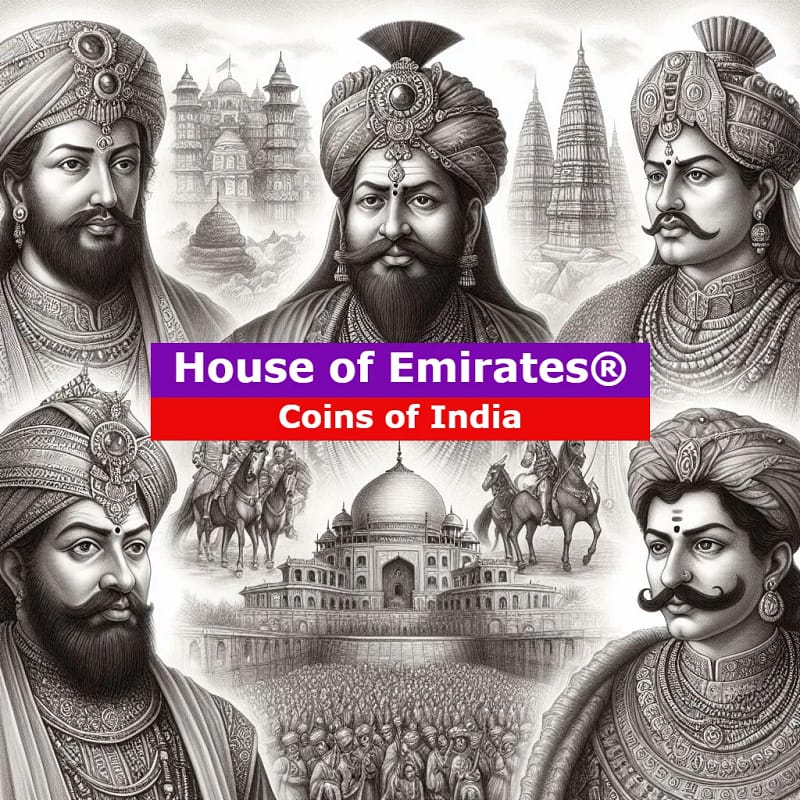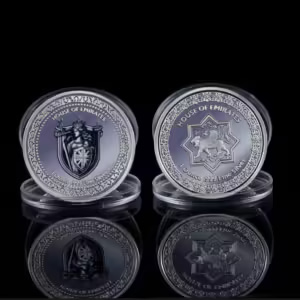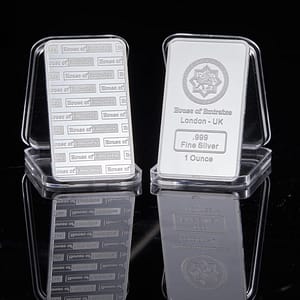By: A. Saed Alzein, CEO of House of Emirates®
London – UK
The earliest coins of India show how far they’ve come in terms of money, culture, and tech. The evolution of monetary systems and the local societies that produced them can be explored and examined through the coins produced at that ancient time, from the earliest punch-marked coins to the intricately designed pieces of various dynasties.
Early Indian Coins
The sixth century BC was when cities and commerce networks began to flourish in India. The earliest coins were made of silver or copper and had symbols representing merchants, rulers, or cities. Their worth was verified and their acceptance in commercial transactions was assured by the punched-on metal pieces.
Mauryan Coinage
The most significant alterations in ancient Indian coinage occurred during the Mauryan Empire (322–185 BC), when Emperor Chandragupta Maurya and his successors ruled. The Mauryan coins, made of silver and copper with symbols such as the elephant, peacock, and lion, representing power, fertility, and authority. Trade within the empire and beyond was helped by these coins, which contributed to its economic prosperity and political stability.
Coinage of India and Greece
The fusion of India and the ancient Hellenistic world, especially in the Indo-Greek period, led to distinctive artistic imagery on coins. The bilingual inscriptions on coins minted by Indo-Greek rulers such as Menander I and Demetrius I reflected the multiculturalism of their reigns and the interconnected nature of both regions.
Kushan Coins
The Kushan Empire (30 BC - 375 AD) marked a defining moment in the development of Indian coinage. During the time of the Kusan kings, gold coins known as dinars were widely circulated in Central Asia. The coins had portraits of kings and images of Hindu and Buddhist deities, these precious coins show the interaction of religious and cultural influences during this period.
The Gupta coinage
The Gupta dynasty (4th to 6th century AD) struck gold coins called dinars, these majestic coins were known for their high purity and beautiful designs. The coins had elaborate designs and intricate inscriptions of a standing or seated king dressed in royal garb and adorned with fine jewellery. Gupta currency represented wealth and assurance, enhancing the empire’s status as a cultural and economic power.
Regional variations
Although imperial coinage dominated much of ancient India, various regional powers also issued their own currencies. Coins featuring regional symbols, ruler’s portraits and religious motifs were minted by the Satavahanas. These coins represented the local authority and facilitated commerce within their respective controlled areas.
Influence of Islam
The fragmentation of political power and foreign conquests gave rise to a completely new Indian coinage, which was artistically rich. The Islamic period in India ( 900 – 1800 AD ) introduced beautiful new monetary systems such as the introduction of silver tanks and copper coins. With the creation of the Delhi Sultanate and the subsequent Mughal Empire, Indian coinage evolved further to incorporate Persian and Islamic artistic influences.
The rich history of ancient Indian coins continues to fascinate coin enthusiasts, scholars and investors worldwide. These majestic coins are not only a memory of the past, but also a treasure of knowledge about past Indian economies, societies and civilization.





